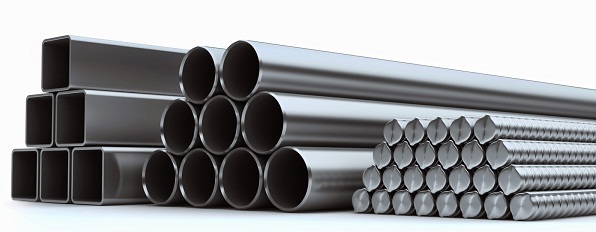The World Steel Association states that there are actually over 3500 different grades of steel, each with a unique make-up of chemical and physical properties. Each grade has its own individual characteristics and applications and the vast array of grades mirrors the widespread and varied use of steel in our society. From constructionto automobiles and I-beams to chassis; steel is around us every single day. For a low cost, quality steel I-Beams, Google ‘RSJs Essex ’.
What defines any given sample of steel as a certain grade is the amount of carbon, alloying elements and impurities it contains. Different organisations classify steel in different ways and there are several popular approaches that use three, four and five categories of steel.

One classification system, set out by the American Iron and Steel Institute (AISA), categorizes the metal into four broad but distinct groups using the C-A-S-T acronym.
Carbon Steels
Steel falls under the ‘Carbon’ classification if there are low quantities of other alloying elements (other than carbon) present. Copper must make up less than 0.4% of the steel’s composition, for example, and silicon must make up less than 0.6%. There should also be no minimum content specified for a range or alloying elements, including cobalt, nickel, titanium and tungsten.
‘Carbon Steel’ also indicates that the steel is not stainless steel.
Carbon steel is often split into sub-categories depending on carbon content. A higher proportion of carbon makes steel stronger and harder at the expense of ductility. Moreover, higher carbon content reduces the melting point of steel meaning the ability to weld the material is reduced.
Mild steel has a particularly low carbon content of between 0.04% and 0.3%. It is the largest category of Carbon Steel and is used in a number of applications; from I-beams to flat sheets.
Medium Carbon Steel has a carbon content of between 0.3% and 0.6%, making it stronger but more brittle than Mild Steel. It is often hardened and tempered through heat treatment and it can be difficult to weld and cut.
High Carbon Steel has a carbon content of up to 1.5%, making it the hardest and most brittle Carbon Steel. It is used in a variety of applications including wire rope, high strength bars and wear resistant plates and forgings.
Alloy Steels
Alloy Steels are steels that have been alloyed with a variety of different elements in order to improve certain characteristics of mechanical properties. Confusingly, all steels are technically alloys although they do not all fall under the Alloy Steel classification. To be described as an Alloy Steel, the steel’s composition should be made up of between 1% and 50% of alloying elements.
Common alloying elements include manganese, cobalt, nickel and silicon although a number of elements such as aluminium, copper, titanium and zinc are all used. Different alloys improve different characteristics and properties of the steel; from strength and hardness to resistance to corrosion and wear.
The Alloy Steel category is usually sub-categorized into two semi-arbitrary groups. Low alloy steels usually have an alloy content of below 8%, whereas high-alloy steels lie somewhere above that threshold.
Stainless Steels
Stainless steel, named due to its ability to withstand corrosion and rust, has a composition of at least 10.5% chromium. Whilst unprotected steel rusts readily (due to the iron content, which reacts with oxygen in the air) the chromium content of stainless steel forms a passive filter of chromium oxide, preventing the spread of corrosion.
There are different grades of stainless steel, each suited to different environments or finished to a different standard. Usually the level of chromium or other alloys dictates the grade.
Tool Steels
As the name suggests, Tool Steels belong to a category of steels designed for tooling applications. They are hard, strong and have superior resistance to abrasion and deformation under high temperatures making them ideal for cutting or shaping other materials.
Their carbon content lies between 0.5% and 1.5% of their total composition and they are alloyed with one or more of specific elements. Chromium, molybdenum, tungsten and vanadium are the most common alloys and typically, tools with higher alloy contents are designed for more severe environments.
Tool steels are grouped into six sub-categories, reflecting their purpose. These are cold work, hot work, high speed, shock resistant and special purpose.
